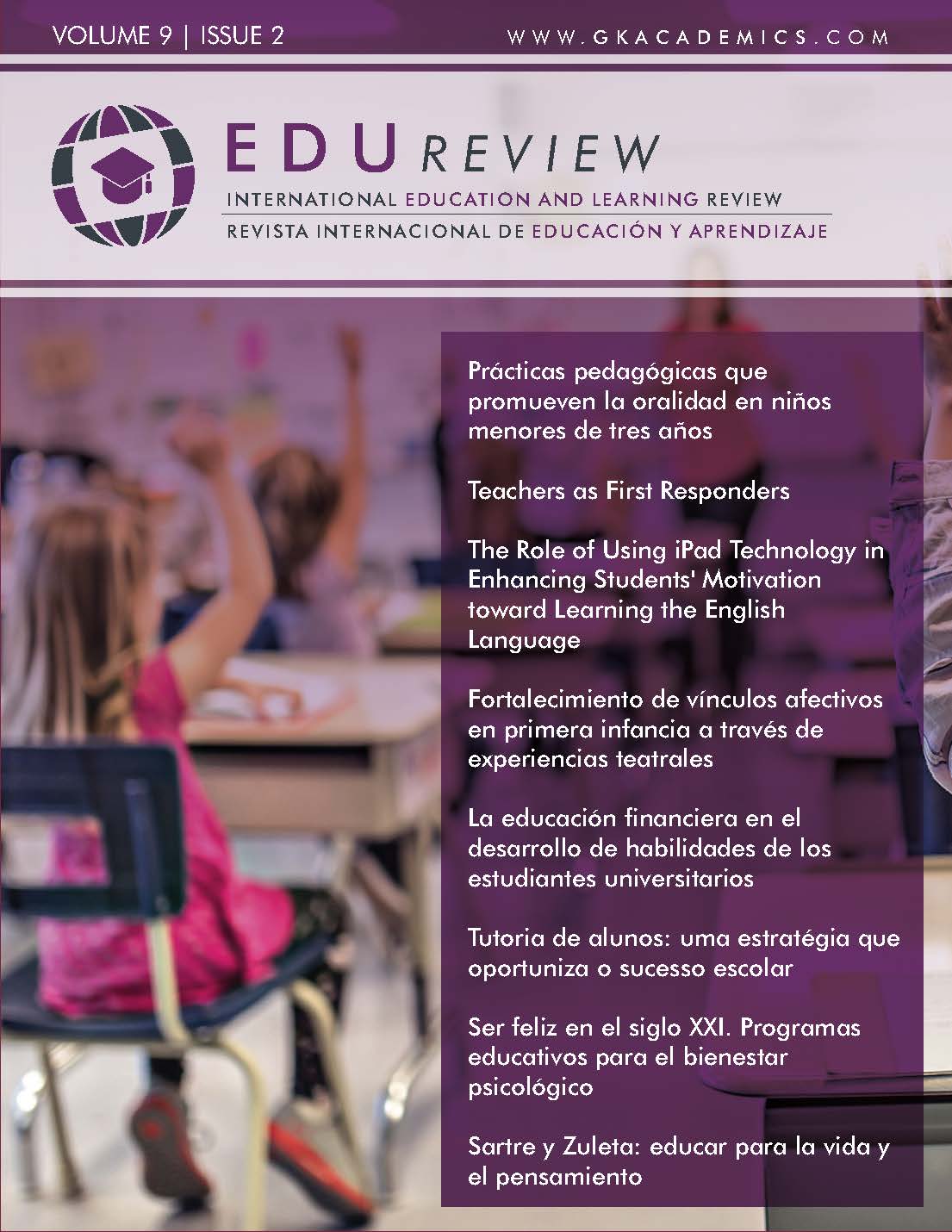Teachers as First Responders
What Teachers Do to Help Migrant Children and Their Families Deal with the Trauma They Experience
DOI:
https://doi.org/10.37467/gka-revedu.v9.2811Keywords:
Migrant, Refugee, Toxic trauma, Toxic stress, Teacher stories, Narrative researchAbstract
While there is much in the press about refugee and migrant children’s movements around the world and their status in the countries where they ultimately (or even temporarily) settle, how these children experience schooling and education is critical in mitigating the effects of the trauma they experience in their home countries, in the process of leaving their home communities or countries, in traveling to their new communities and countries and getting settled in those new communities and countries. This paper presents the stories of three teachers who work with migrant children in the United States Midwest. Interviews with these teachers show that they actively work to mitigate the trauma the migrant children have experienced by creating classrooms that welcome the children and their families, help them to have a sense of belonging in their schools and communities, and help the children develop feelings of confidence and competence, critical to overcoming toxic stress.
Downloads
Global Statistics ℹ️
|
421
Views
|
424
Downloads
|
|
845
Total
|
|
References
Adverse Childhood Experiences Study (ACES). (2020). Retrieved from: www.cdc.gov/violenceprevention/aces
Bruner, J. S. (2002). Making stories: Law, literature, life. New York: Farrar, Straus and Giroux.
Bruner, J. S. (1961). The act of discovery. Harvard Educational Review, 31, 21–32.
Gonzalez, E., Jr. (2020). Migrant farm workers: Our nation’s invisible population. Diversity, Equity, Inclusion Community of Practice (COPDEI), Purdue University, Lafayette, IN.
International Labour Organization (ILO). (2021). Statistics on international labour migration. www.ilo.org/global/topics/labour-migration/policy-areas/...
Lingard, L., Albert, M., & Levinson, W. (2008). Grounded theory, mixed methods, and action research. BMJ, 337, 459-461.
Maxwell, J. A. (2005). Qualitative research design: An interactive approach (2nd ed.). Thousand Oaks, CA: Sage.
NCTSN. National Child Traumatic Stress Network. www.nctsn.org
Paulsen, G. (2005). The crossing. New York, NY: Scholastic.
Rosales, X. (nd). Toxic Stress. Immokalee, FL: Center for Child Stress and Health. Retrieved from med.fsu.edu/childStress
United Nations Refugee Agency (UNHCR). (2019). Global Trends. unhcr.org.
US Department of Education. (1966). Title I. Part C—Education of Migratory Children. Washington, DC: United States Department of Education.
Zemelman, S. (2013). Teachers’ stories need to be heard. The Chicago Reporter, March 4, 2013. Retrieved from www.chicagoreporter.com
Downloads
Published
How to Cite
Issue
Section
License
Those authors who publish in this journal accept the following terms:
-
Authors retain copyright.
-
Authors transfer to the journal the right of first publication. The journal also owns the publishing rights.
-
All published contents are governed by an Attribution-NoDerivatives 4.0 International License.
Access the informative version and legal text of the license. By virtue of this, third parties are allowed to use what is published as long as they mention the authorship of the work and the first publication in this journal. If you transform the material, you may not distribute the modified work. -
Authors may make other independent and additional contractual arrangements for non-exclusive distribution of the version of the article published in this journal (e.g., inclusion in an institutional repository or publication in a book) as long as they clearly indicate that the work was first published in this journal.
- Authors are allowed and recommended to publish their work on the Internet (for example on institutional and personal websites), following the publication of, and referencing the journal, as this could lead to constructive exchanges and a more extensive and quick circulation of published works (see The Effect of Open Access).













